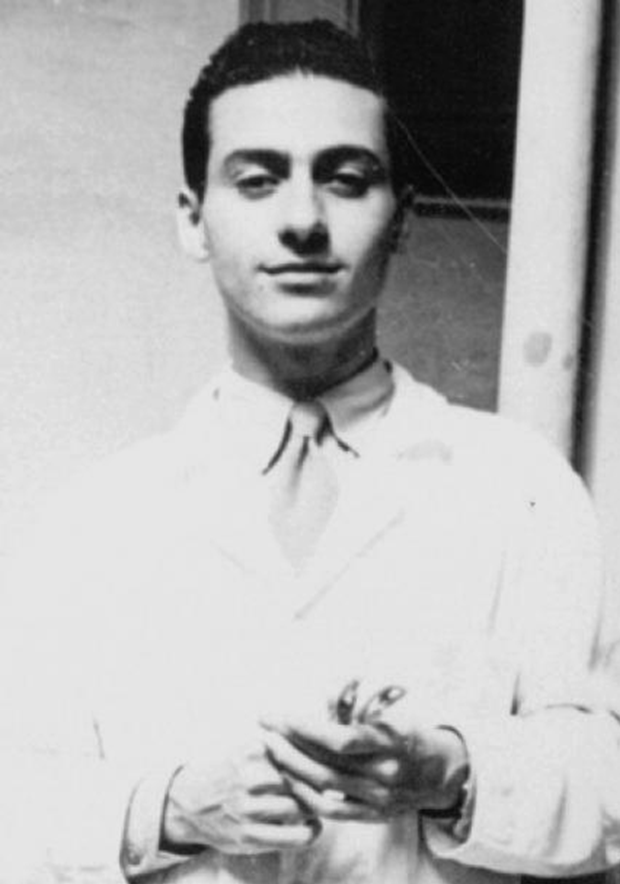Today marks the 32nd installment in a series of articles by HumanProgress.org titled Heroes of Progress. This bi-weekly column provides a short introduction to heroes who have made an extraordinary contribution to the well-being of humanity. You can find the 31st part of this series here.
This week our hero is Benjamin Rubin, the American microbiologist who invented the bifurcated needle. Rubin’s bifurcated needle was instrumental in the World Health Organization’s 1980 campaign that led to the full eradication of smallpox, the only infectious disease to achieve that distinction. In the mid-1970s, Rubin’s bifurcated needle administered more than 200 million vaccinations annually. It is estimated to have saved more than one hundred million lives and prevented hundreds of millions more people from contracting smallpox.
Benjamin Rubin was born on September 27, 1917 in New York City. As a child, Rubin was fascinated by science. In 1934, he enrolled in the City College of New York to study biochemistry. Rubin received his Bachelor of Science in 1937. IN 1938, he was awarded his Master of Science in biology from Virginia Tech. After several different laboratory jobs, Rubin relocated to Yale University in 1944 to work as a research assistant and study for his PhD.
In 1947, Rubin was awarded his doctorate in microbiology from Yale University and began working at several different laboratories and universities. In 1954, Rubin became a professor of public health and preventative medicine at Baylor University. In 1960, Rubin took a job at Wyeth Laboratories in Pennsylvania and it was there that Rubin created his world-changing invention.
During the 1960s, smallpox killed more than two million people every year. With no cure available, if a person became infected with smallpox, nothing could be done to treat the disease. Before Rubin’s bifurcated needle, specially adapted jet-injector guns were used for mass vaccination efforts. However, the guns were expensive to maintain, required specialist training to use, and were often unreliable. That meant that hundreds of millions of people, predominantly living in poorer and sparsely populated places, remained vulnerable to catching smallpox.
Rubin created his bifurcated needle by working on the eyelet of a machine sewing needle. He ground it down until it became fork-shaped (i.e., with two prongs). As such, the bifurcated needle is a narrow steel rod that is approximately 2.5 inches (6cm) long, with two prongs at one end. When the bifurcated end of the needle is dipped into a vial of freeze-dried smallpox vaccine, the correct amount of vaccine is then contained between the two prongs. The needle is then used to puncture a patient’s upper arm fifteen times in a small circular area.
Unlike the jet-injector, Rubin’s needle was very cheap (i.e., it cost less than $5 for a thousand needles). Moreover, after sterilizing the needle with boiling water or by passing it through a flame, the needle could be continually reused. Furthermore, the patient’s skin did not need to be disinfected beforehand. Finally, the bifurcated needle used substantially less serum.
Whereas a jet-injector could deliver about 25 vaccines per vial of smallpox vaccine, using a bifurcated needle meant there were more than 100 doses per vial. The technique to vaccinate someone using the bifurcated needle could also be learned by anyone in just a few minutes, rather than relying on a trained medical professional. All these factors meant that the bifurcated needle was quickly adopted as a cost-effective alternative to the clunky, expensive, and often unreliable jet-injectors.
The bifurcated needle was the primary instrument used in the World Health Organization’s smallpox eradication campaign between 1966 and 1977. During the final years of the campaign, it is estimated that the bifurcated needle was used to deliver more than 200 million vaccinations every year. In 1980, the World Health Assembly declared that smallpox had been defeated, meaning for the first time in human history, humanity had successfully eradicated a deadly disease. The World Economic Forum has estimated that the bifurcated needle has saved more than 130 million lives since its invention in 1961.

In 1984, Rubin became a professor at the Philadelphia College for Osteopathic Medicine, and after contributing to more than 150 science journals throughout his career, he retired in 1995. Throughout his life, Rubin rightfully received numerous academic awards. In 1992, he was inducted into the Inventors Hall of Fame. Rubin died on March 10, 2010, at the age of 93.
Thanks in part to the work of Benjamin Rubin, smallpox, which was a disease that haunted mankind for millennia, is now eradicated. For saving the lives of over one hundred million people and for fundamentally changing the world for the better, Benjamin Rubin is deservedly our 32nd Hero of Progress.





